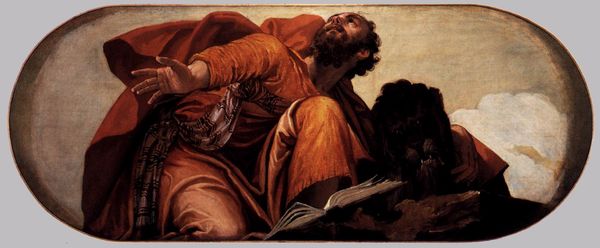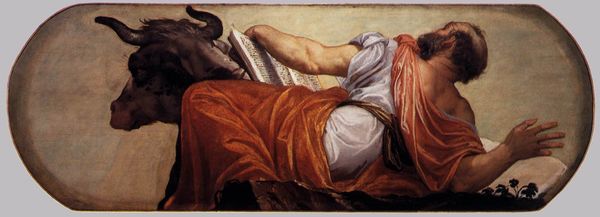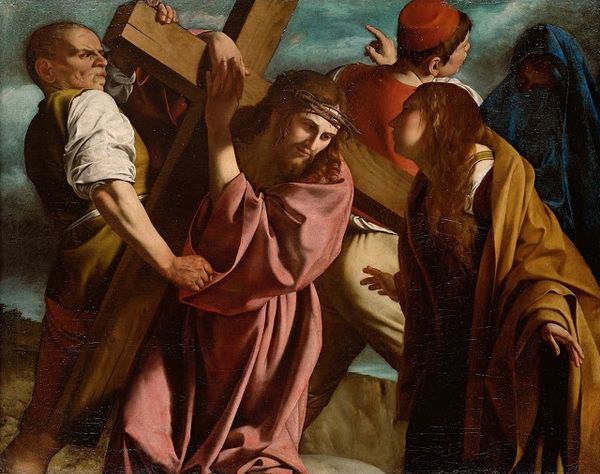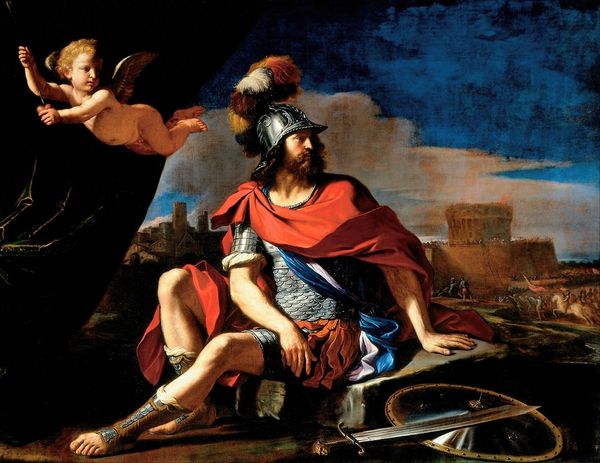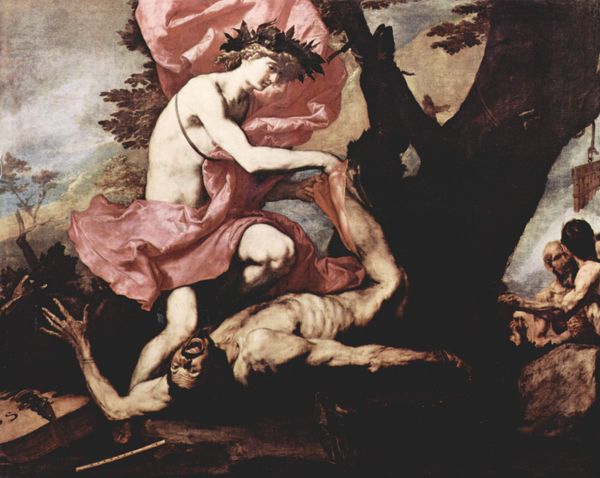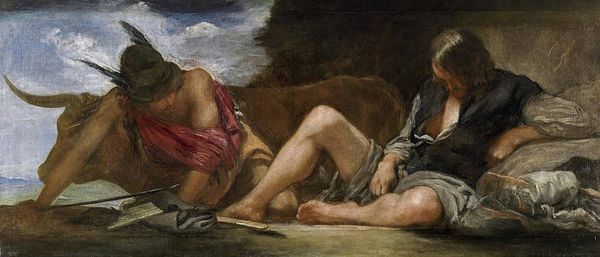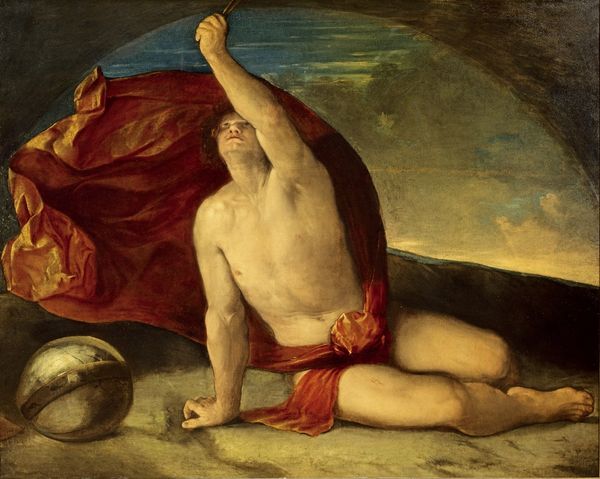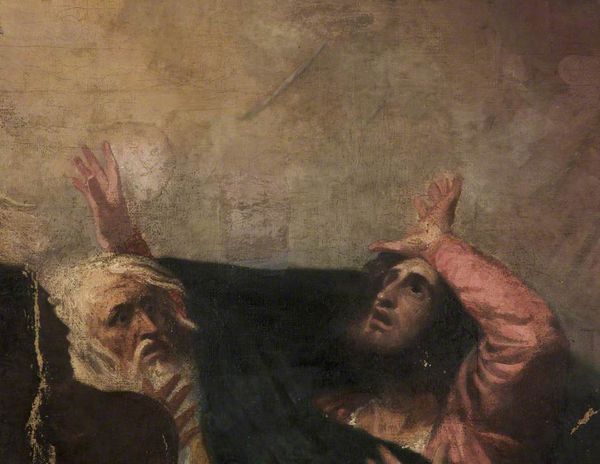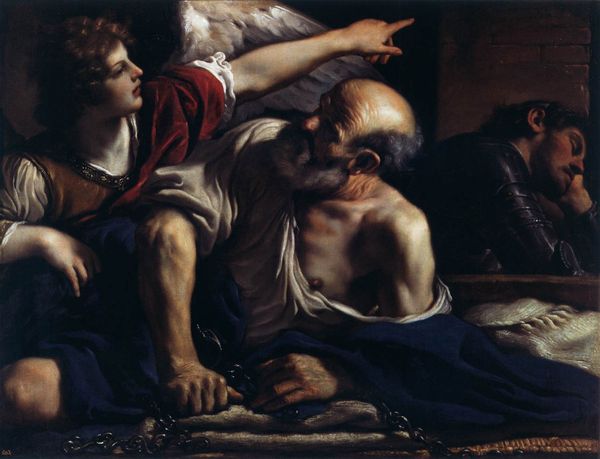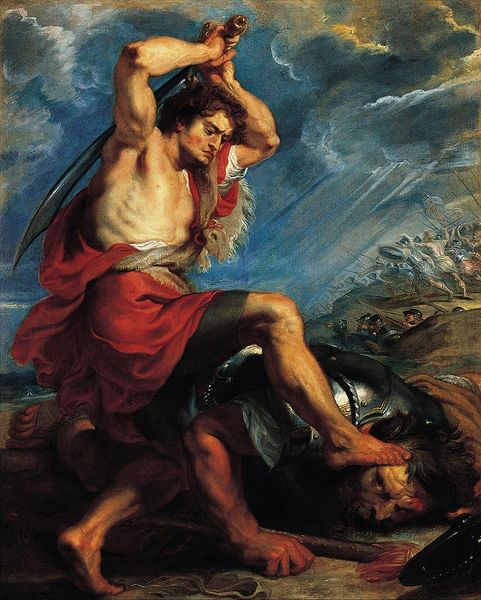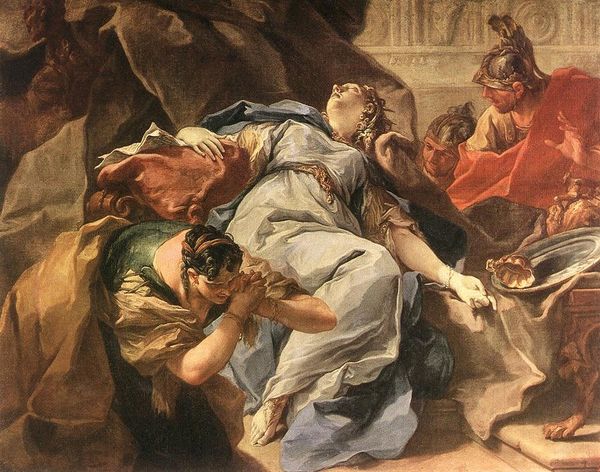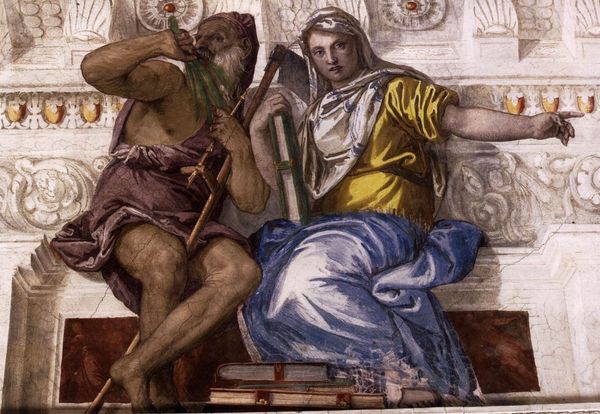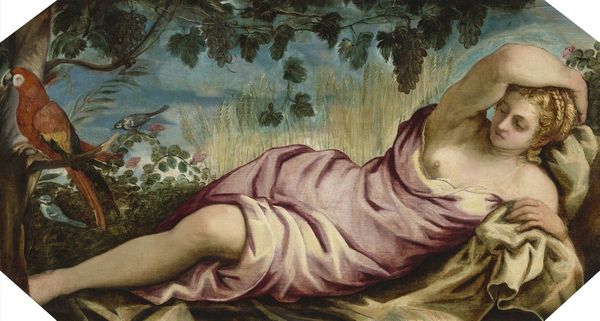
painting, oil-paint
#
portrait
#
venetian-painting
#
allegory
#
painting
#
oil-paint
#
oil painting
#
christianity
#
history-painting
#
italian-renaissance
#
portrait art
Dimensions: 85 x 240 cm
Copyright: Public domain
Curator: This is Paolo Veronese's "St John the Evangelist," painted around 1555. Editor: The upward gaze immediately conveys a sense of divine inspiration, almost a submission to a higher power. And that eagle... It's imposing! Curator: Yes, Veronese's dynamic composition certainly catches the eye. Note how the diagonal lines, from the saint's gaze down to the eagle, create a strong visual pathway. The restricted palette, mostly warm hues, adds to the painting’s intensity. Editor: That eagle is more than just an imposing figure. It’s the traditional symbol of St. John, signifying his lofty spiritual insight and the soaring theological heights of his Gospel. The quill in his hand and the scroll beside him, these are his identifying attributes. Curator: Observe the contrast between the meticulously rendered fabrics, the rich folds of his garments, and the more broadly painted background. It is a wonderful counterpoint of textures and finishes. Editor: And consider how the reddish cloak suggests martyrdom and the fire of divine love. Even his very pose mirrors traditional depictions, anchoring this piece within a rich historical context. Curator: What is most fascinating, beyond the surface depiction, is the sheer compositional complexity. It is a dynamic dance between colour and form, creating a powerful sense of movement within the frame. The interplay between figure and space makes one keep circling back to this central figure. Editor: I agree; seeing the visual motifs attached to John the Evangelist provides continuity over time. Symbols, even centuries later, retain a certain emotional resonance. Curator: It’s interesting to see how Veronese synthesizes formal principles with symbolic weight to produce such an enduring piece of visual communication. Editor: Absolutely. Reflecting on these layers gives "St John the Evangelist" added depth and relevance for contemporary audiences.
Comments
No comments
Be the first to comment and join the conversation on the ultimate creative platform.
